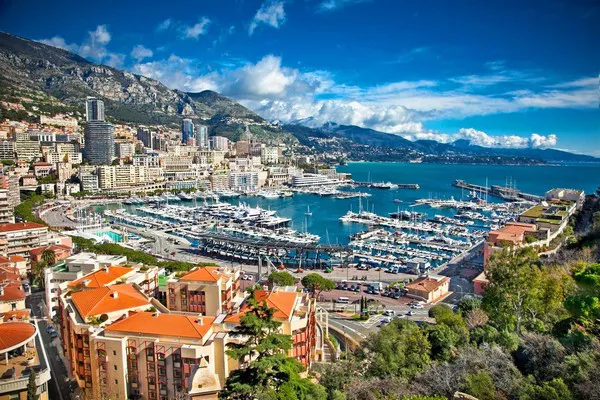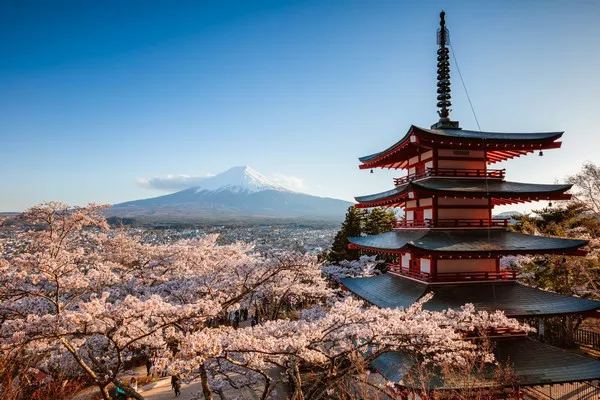Europe, known for its rich history, diverse cultures, and picturesque landscapes, is home to a multitude of nations, each with its own unique identity. While some European countries are vast in size, others are relatively small, with compact territories that belie their significance on the world stage. In this article, we explore the ranking of the smallest countries in Europe, shedding light on their history, culture, and contributions to the continent and the world.
Ranking of the 10 Smallest Countries in Europe
1. Vatican City
Nestled within the heart of Rome, Vatican City stands as the smallest independent state in the world, both in terms of area and population. With an area of just 44 hectares (110 acres) and a population of approximately 800 residents, Vatican City is a sovereign enclave within the Italian capital. It serves as the spiritual and administrative center of the Roman Catholic Church, housing iconic landmarks such as St. Peter’s Basilica and the Vatican Museums, home to masterpieces by renowned artists like Michelangelo and Raphael.
Despite its diminutive size, Vatican City wields significant influence on the global stage, with the Pope serving as the spiritual leader of over one billion Catholics worldwide. The Holy See, the ecclesiastical jurisdiction of the Catholic Church, maintains diplomatic relations with numerous countries, playing a vital role in international diplomacy and humanitarian efforts.
2. Monaco
Nestled along the French Riviera, Monaco is renowned for its glamorous casinos, luxury yachts, and prestigious Grand Prix motor race. With an area of just 2.02 square kilometers (0.78 square miles), Monaco ranks as the second-smallest country in Europe. Despite its compact size, Monaco boasts a vibrant economy driven by tourism, finance, and high-end real estate.
Home to approximately 38,000 residents, Monaco is a constitutional monarchy ruled by the Grimaldi family since the 13th century. Its capital, Monte Carlo, is synonymous with opulence and extravagance, attracting jet-setters and celebrities from around the world. In addition to its renowned casino and Formula One circuit, Monaco is celebrated for its cultural institutions, including the Oceanographic Museum and the Prince’s Palace.
3. San Marino
Nestled within the rugged Apennine Mountains, San Marino is one of the oldest sovereign states in the world, with a history dating back to the 4th century AD. With an area of just 61 square kilometers (24 square miles), San Marino ranks as the third-smallest country in Europe. Despite its diminutive size, San Marino boasts a rich cultural heritage, with UNESCO-listed historic sites and picturesque medieval towns.
Home to approximately 34,000 residents, San Marino is a parliamentary republic governed by a popularly elected legislature and a ceremonial head of state known as the Captains Regent. Its capital, also named San Marino, is a UNESCO World Heritage Site renowned for its well-preserved medieval architecture and panoramic views of the surrounding countryside.
4. Liechtenstein
Nestled between Switzerland and Austria, Liechtenstein is a landlocked microstate known for its stunning Alpine scenery and prosperous economy. With an area of just 160 square kilometers (62 square miles), Liechtenstein ranks as the fourth-smallest country in Europe. Despite its small size, Liechtenstein boasts a high standard of living, with a diversified economy driven by banking, manufacturing, and tourism.
Home to approximately 38,000 residents, Liechtenstein is a constitutional monarchy ruled by the princely House of Liechtenstein. Its capital, Vaduz, is a charming town characterized by its medieval castle, contemporary art museum, and scenic vineyards. Liechtenstein is also celebrated for its outdoor recreational opportunities, including hiking, skiing, and mountain biking.
5. Malta
Nestled in the central Mediterranean Sea, Malta is an archipelago renowned for its ancient history, stunning architecture, and crystal-clear waters. With an area of just 316 square kilometers (122 square miles), Malta ranks as one of the smallest countries in Europe. Despite its compact size, Malta boasts a rich cultural heritage, with UNESCO-listed megalithic temples, medieval towns, and Baroque palaces.
Home to approximately 500,000 residents, Malta is a parliamentary republic with a president serving as the head of state. Its capital, Valletta, is a UNESCO World Heritage Site renowned for its fortified city walls, grand cathedrals, and ornate palazzos. Malta is also celebrated for its vibrant festivals, including the annual Carnival and the Feast of St. John.
6. Andorra
Nestled in the eastern Pyrenees mountains between France and Spain, Andorra is a tiny principality known for its rugged landscapes and tax-free shopping. With an area of just 468 square kilometers (181 square miles), Andorra ranks as one of the smallest countries in Europe. Despite its small size, Andorra boasts a high standard of living, with a thriving tourism industry centered around skiing, hiking, and outdoor recreation.
Home to approximately 77,000 residents, Andorra is a parliamentary co-principality with the President of France and the Bishop of Urgell serving as co-princes. Its capital, Andorra la Vella, is the highest capital city in Europe and is renowned for its Romanesque architecture, duty-free shopping, and vibrant cultural scene.
7. Luxembourg
Nestled between Belgium, France, and Germany, Luxembourg is a landlocked country known for its picturesque countryside, historic castles, and vibrant cultural scene. With an area of just 2,586 square kilometers (998 square miles), Luxembourg ranks as one of the smallest countries in Europe. Despite its small size, Luxembourg boasts a prosperous economy, with a strong focus on finance, steel, and technology.
Home to approximately 634,000 residents, Luxembourg is a constitutional monarchy with a Grand Duke serving as the head of state. Its capital, Luxembourg City, is a UNESCO World Heritage Site renowned for its medieval fortifications, charming old town, and modern European institutions. Luxembourg is also celebrated for its culinary delights, including traditional dishes like bouneschlupp and judd mat gaardebounen.
8. Cyprus
Nestled in the eastern Mediterranean Sea, Cyprus is an island nation known for its ancient history, stunning beaches, and vibrant culture. With an area of just 9,251 square kilometers (3,572 square miles), Cyprus ranks as one of the smallest countries in Europe. Despite its small size, Cyprus boasts a rich cultural heritage, with UNESCO-listed archaeological sites, Byzantine churches, and Ottoman-era architecture.
Home to approximately 1.2 million residents, Cyprus is a presidential republic with a president serving as the head of state and government. Its capital, Nicosia, is the last divided capital in the world, with the northern part of the city under Turkish control. Cyprus is renowned for its warm climate, beautiful beaches, and vibrant nightlife, making it a popular destination for tourists from around the world.
9. Montenegro
Nestled along the Adriatic Sea, Montenegro is a small Balkan country known for its stunning coastline, rugged mountains, and rich cultural heritage. With an area of just 13,812 square kilometers (5,333 square miles), Montenegro ranks as one of the smallest countries in Europe. Despite its small size, Montenegro boasts a diverse landscape, with pristine beaches, lush forests, and towering peaks.
Home to approximately 620,000 residents, Montenegro is a parliamentary republic with a president serving as the head of state. Its capital, Podgorica, is a vibrant city with a mix of modern architecture, historic landmarks, and bustling markets. Montenegro is celebrated for its outdoor recreational opportunities, including hiking in Durmitor National Park, rafting on the Tara River, and sailing along the Bay of Kotor.
10. Kosovo
Nestled in the heart of the Balkans, Kosovo is a landlocked country known for its rich history, cultural diversity, and stunning natural beauty. With an area of just 10,887 square kilometers (4,203 square miles), Kosovo ranks as one of the smallest countries in Europe. Despite its small size, Kosovo boasts a diverse population, with ethnic Albanians, Serbs, and other minority groups coexisting in harmony.
Home to approximately 1.8 million residents, Kosovo is a parliamentary republic with a president serving as the head of state. Its capital, Pristina, is a bustling city with a mix of Ottoman-era architecture, Soviet-style buildings, and modern developments. Kosovo is celebrated for its vibrant cultural scene, with traditional music, dance, and cuisine reflecting its rich heritage.
See Also: 10 Most Powerful Countries In Asia
In conclusion, Europe is home to a diverse array of countries, ranging from vast nations to small microstates. While the smallest countries in Europe may lack size in terms of land area, they are rich in history, culture, and natural beauty. From the spiritual enclave of Vatican City to the glamorous principality of Monaco, these diminutive nations leave an indelible mark on the continent and the world at large. As guardians of their unique identities and traditions, the smallest countries in Europe play a vital role in preserving the rich tapestry of European civilization for generations to come.
You Might Be Interested In:























